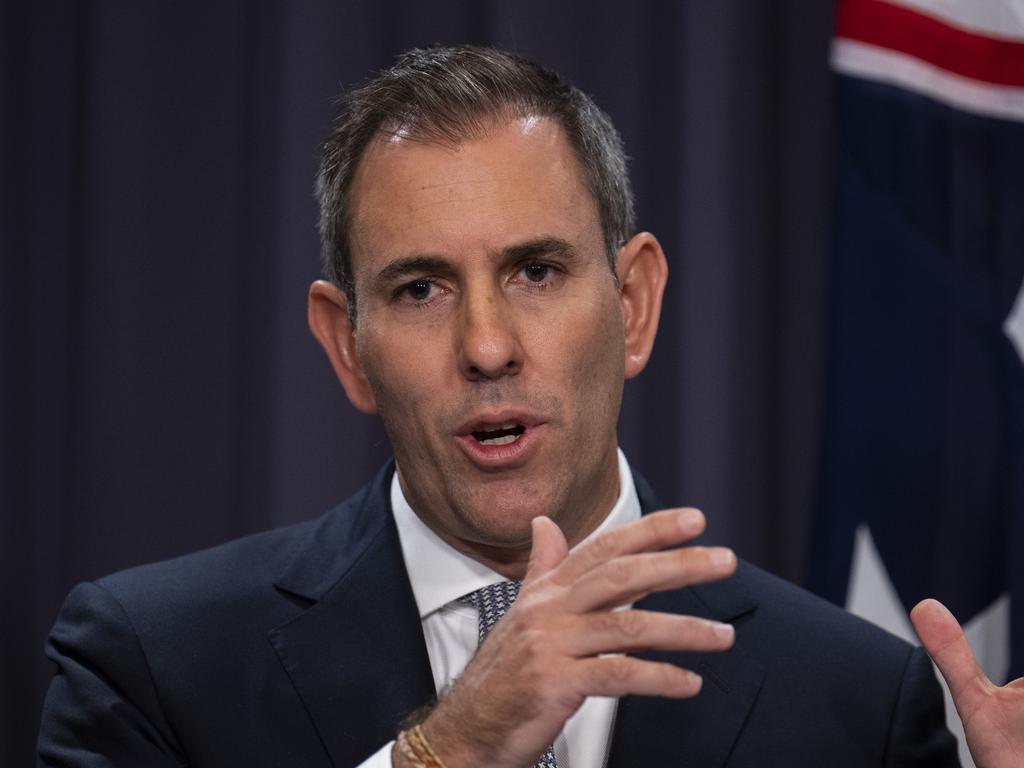The post-pandemic record population surge of 400,000 migrants this year, stunning employment gains, and some decent growth in wages are swelling Canberra’s coffers.
Plus there’s the fiscal sorcery of bracket creep, when rising incomes cause individuals to pay an increasing proportion of their pay in tax, even though there may not have been changes to tax rates and thresholds.
The Parliamentary Budget Office has estimated bracket creep alone will give the Treasurer an extra $4bn in revenue next year and, even with the stage three tax cuts, wage inflation will see the average personal income tax rate rise to a record 26.7 per cent in a decade.
Budget tragic Chris Richardson estimates that in the current financial year, revenue will be $24bn higher than expected at October’s budget, entirely due to more company tax and personal income tax.
“The economy is currently kinder to government finances than at any other time in the century-and-a-half since gold rushes dominated the economies of the colonies,” Richardson says of “Lucky Jim’s” tax bonanza.
The Treasurer maintains that the biggest driver of the improvement in the budget over the four years of forward estimates he will reveal on Tuesday is not the war-driven commodity-price windfall but Australia’s robust jobs market.
Chalmers claims about 40 per cent of the revenue upgrade is a result of strong employment growth and a pick-up in wages growth.
After years of declining purchasing power, the Treasurer says workers may even see a slight rise in after-inflation pay. Buyer beware.
In its Statement on Monetary Policy on Friday, the Reserve Bank said persistent energy inflation and a rising tax take from bracket creep would squeeze household disposable income, which fell by 3 per cent last year.
The government’s figures show only about 20 per cent of the revenue boost is due to higher commodity prices.
Of course, that depends on the formula Treasury adopts to plug in the future demand for iron ore, gas, coal and other key exports.
Canberra’s conventions around these projections are eccentric, to be kind, in the world of professional economists.
But the key change for the Albanese government over the years before the next election is a bigger economy: more workers, fewer jobless and a bigger tax bucket.
Richardson calculates that over four years, the economy will be a cumulative half a trillion dollars larger than Treasury estimated in October.
The government expects a net 715,000 extra migrants over the two years to the end of June next year. That’s the largest inflow in our history, due to the return of foreign students and working holiday makers.
Only months ago, official Treasury estimates had net overseas migration of 470,000 over the period, or 235,000 a year. Get a better abacus, watch the arrivals halls.
Whether we see five minutes of surplus, only the government knows.
What’s clearer, however, is that Labor’s social spending commitments are rising quickly, productivity growth has slumped, the economy will be easing into the slow growth lane from the RBA’s rate hikes and the country has no buffers for the next crisis.
Back in black may be a pleasant, fleeting surprise; look a little into the fiscal beyond and it’s all simply red.








If Jim Chalmers pops out a surplus on Tuesday night it will be because of a fortuitous economic alignment that eclipses anything we’ve seen since Queen Victoria ruled the colonies.